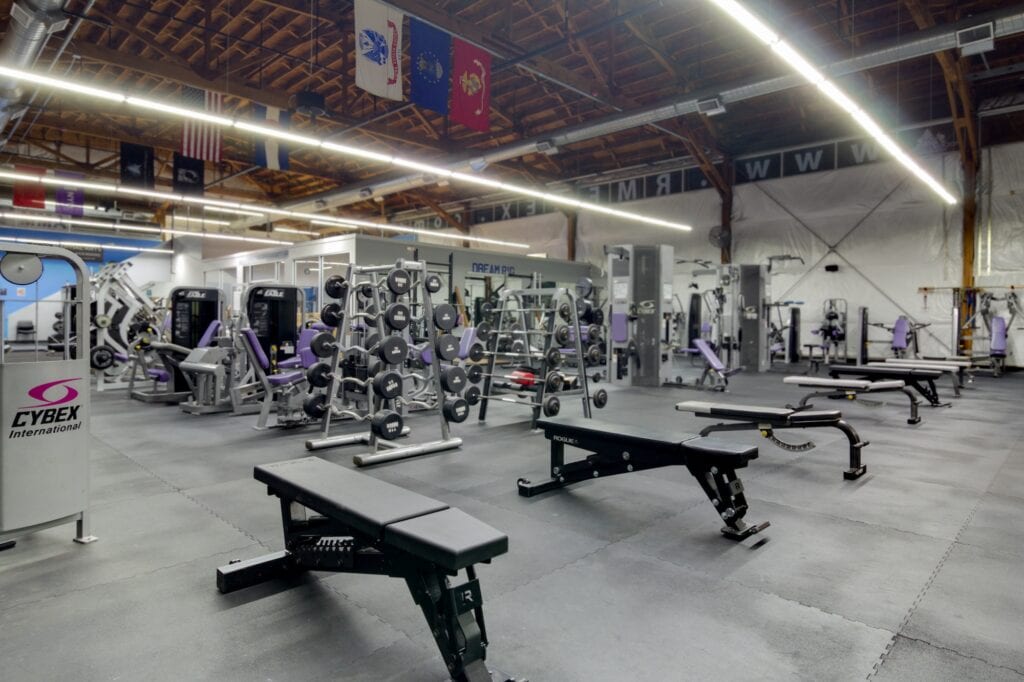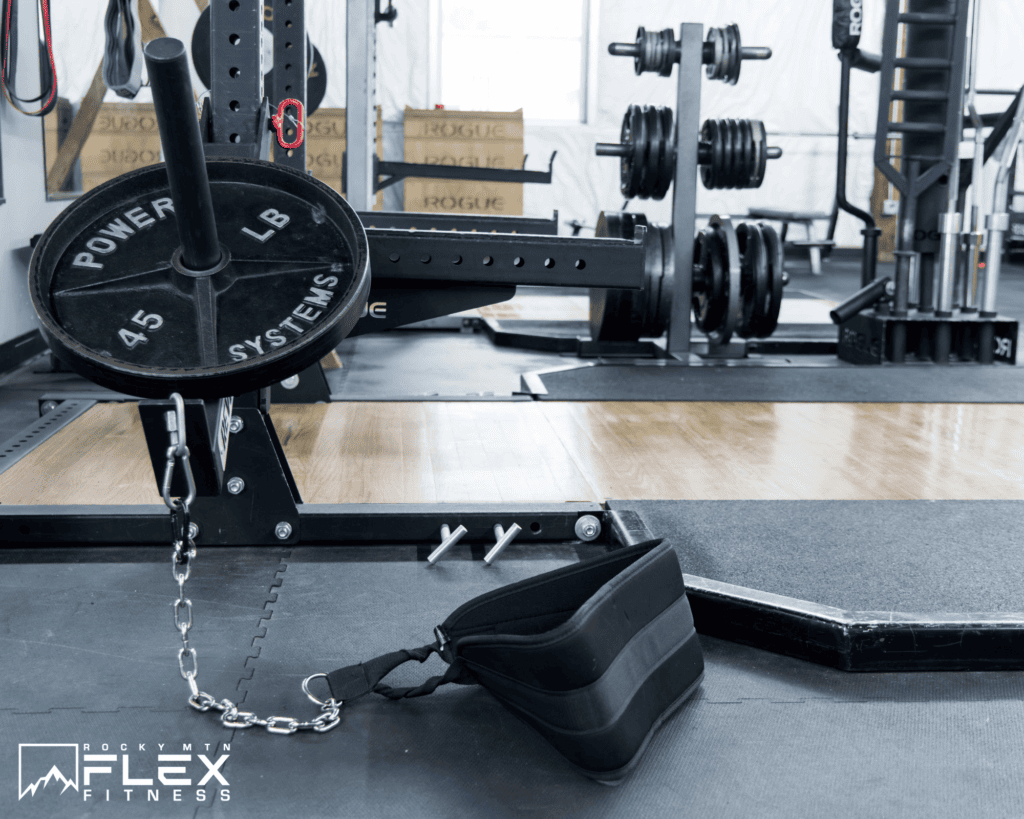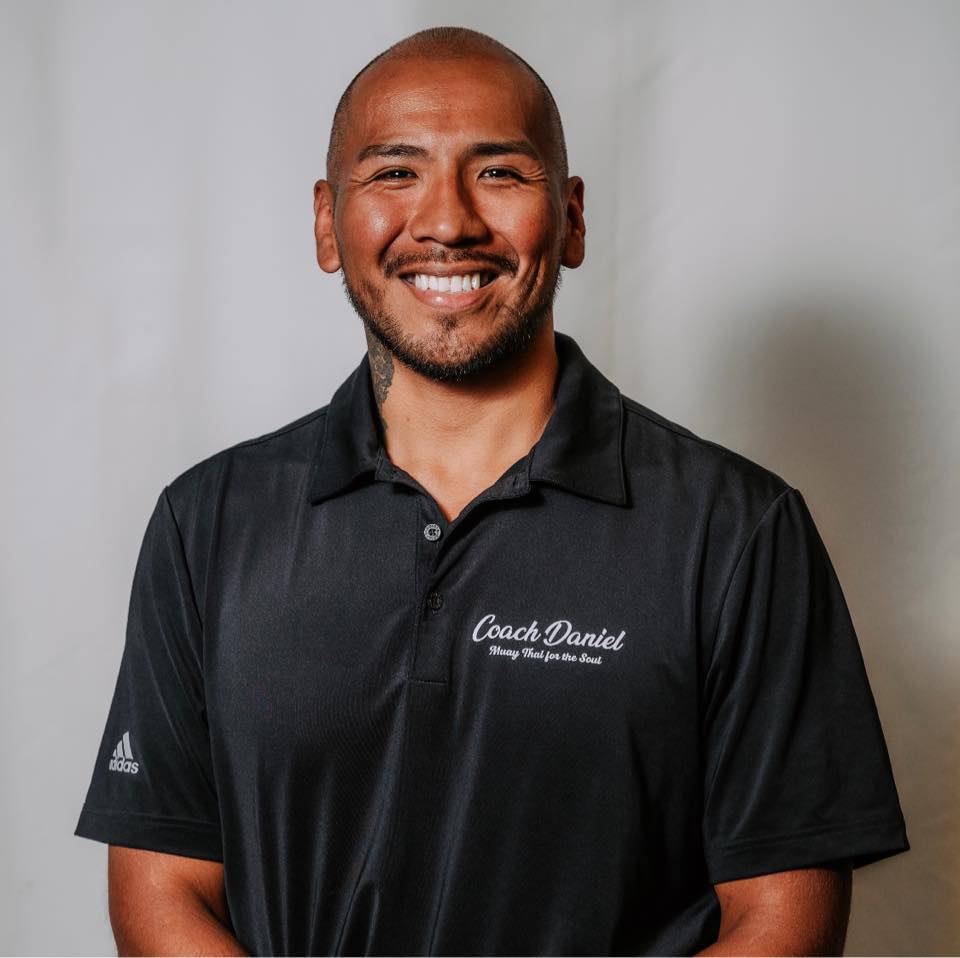The lacrosse ball is an excellent tool that you can use for self-myofascial release, also known as trigger point release. There are many benefits to utilizing lacrosse ball massage to aid in your recovery, such as releasing tight muscles and soreness, improving flexibility, and increasing range of motion.
Lacrosse ball massage is something RMFlex members use regularly for their recovery, along with other modalities such as foam rolling. What makes the lacrosse ball so useful is that it is small and hard, and because of its size, it can get into hard-to-reach areas that you cannot typically reach with a foam roller. Although painful, you can effectively target areas including the shoulders, upper back, hips, psoas, glutes, feet, and more by pinpointing specific knots or tightness in these regions.
We now have Rocky Mountain Flex Fitness embossed lacrosse balls for sale at the front desk, so if you find this information helpful, then swing by to purchase one. If you haven’t utilized a lacrosse ball for its many muscular benefits, below you’ll read more about the benefits plus four of the best common trigger point release techniques to start with.
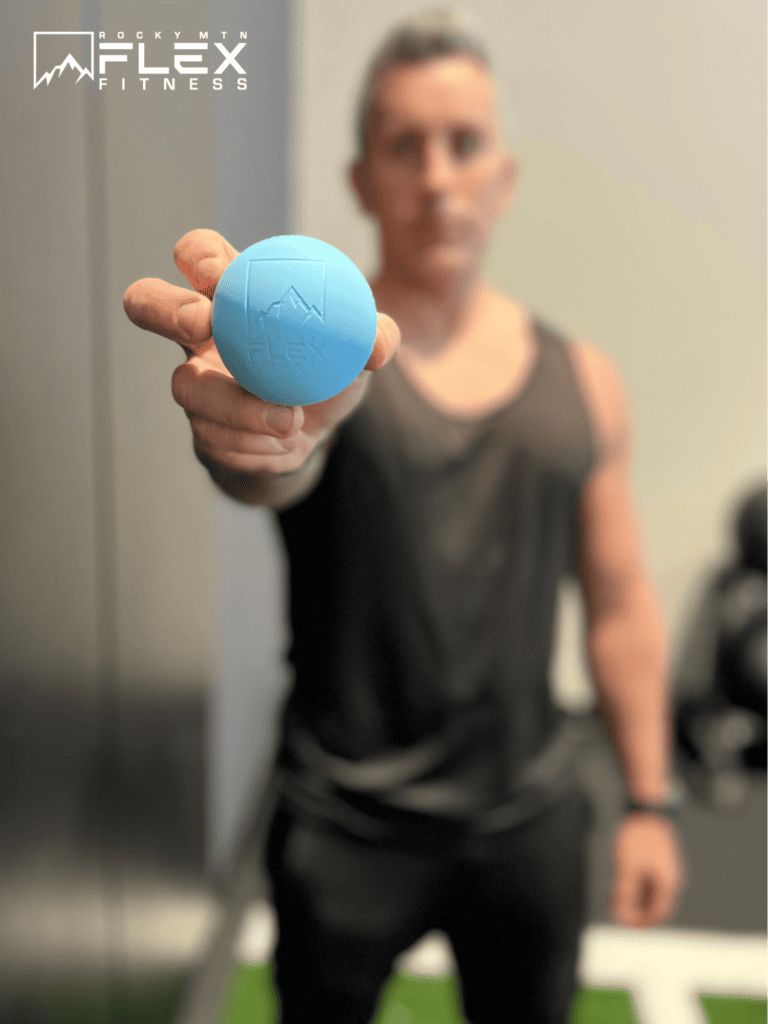
What is the Fascia?
Fascia is a multi-layer connective tissue that surrounds and intertwines with muscles, bones, nerves, blood vessels, and organs throughout the body. It plays a crucial role in providing support, structure, and protection to these bodily components. The fascia is slippery and stretches as you move, but under certain circumstances, it can dry up and become tight or restricted due to factors such as overuse, injury, surgery, inactivity, or poor posture. This can lead to tightness or adhesions within the fascia that can create areas of tension or trigger points, contributing to muscle stiffness and discomfort, reduced flexibility, and limited range of motion.
Inactivity due to being sedentary most of the time can play a big part in fascia muscle pain, this just highlights the importance of regular exercise.
Myofascial Relief and Fascia:
Myofascial relief techniques, such as using a lacrosse ball, foam rolling, stretching, dry needling, and applying heat to the area in pain, aim to target and release tension within the fascia. By applying pressure to specific areas, the fascia can be manipulated, helping to break up adhesions and restore its natural elasticity.
Incorporating regular self-myofascial release practices, including the use of a lacrosse ball, can contribute to better fascial health. Integrating trigger point release techniques can enhance mobility, improve flexibility, reduce the risk of injuries related to fascial tightness, and support optimal muscular function.
If you are sedentary, it’s important that you start to move your body regularly by taking regular walks and incorporating a regular exercise routine. If you aren’t active and don’t know where to start, one of our personal trainers can help ease you into a routine.
What areas of the body can I target with a lacrosse ball for myofascial relief?
- Hamstring
- Quadriceps
- Shoulders
- Calves
- Lower and upper back
- Glutes
- Psoas muscle
- Hips
- Levator muscle
- Forearms
- TFL (Tensor Fascia Lata)
- Teres Minor
- Bottoms of your feet
Benefits of Using a Lacrosse Ball for Self-Myofascial Relief
Targeted Muscle Release: The firmness of a lacrosse ball allows for targeted pressure on specific muscle knots or tight areas, aiding in the release of tension and promoting muscle relaxation.
Improved Blood Circulation: Applying pressure to muscle tissues with a lacrosse ball can enhance blood flow to the targeted area. This increased circulation can aid in reducing muscle soreness and tension.
Enhanced Flexibility and Range of Motion: Myofascial release using a lacrosse ball can contribute to improved flexibility by releasing tightness in muscles and fascia. This can help enhance your range of motion during workouts or daily activities.
Post-Workout Recovery: Incorporating myofascial release techniques with a lacrosse ball into your post-workout routine may assist in reducing muscle soreness, aiding in quicker recovery between workouts.
Cost-Effective and Ultra Portable: Lacrosse balls are relatively inexpensive and portable, making them a convenient tool for self-myofascial release at home, in the gym, or even while traveling. Traveling with a larger foam roller can be a challenge when it comes to space.
Versatile Use on Various Body Parts: The small size and shape of a lacrosse ball allow for versatile use on different body parts, such as the shoulders, back, hips, and feet, making it an adaptable tool for addressing muscle tension in various areas.
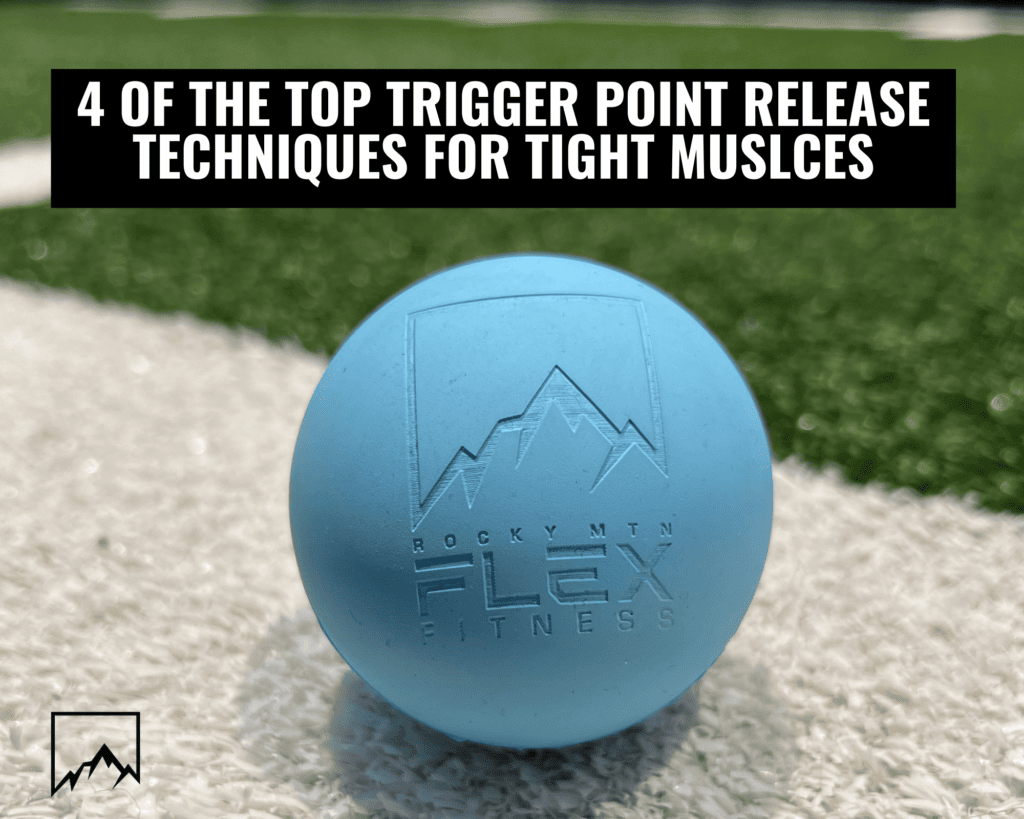
4 OF THE TOP TRIGGER POINT RELEASE TECHNIQUES FOR TIGHT MUSCLES
- Levator Muscle Trigger Point Release with Lacrosse Ball
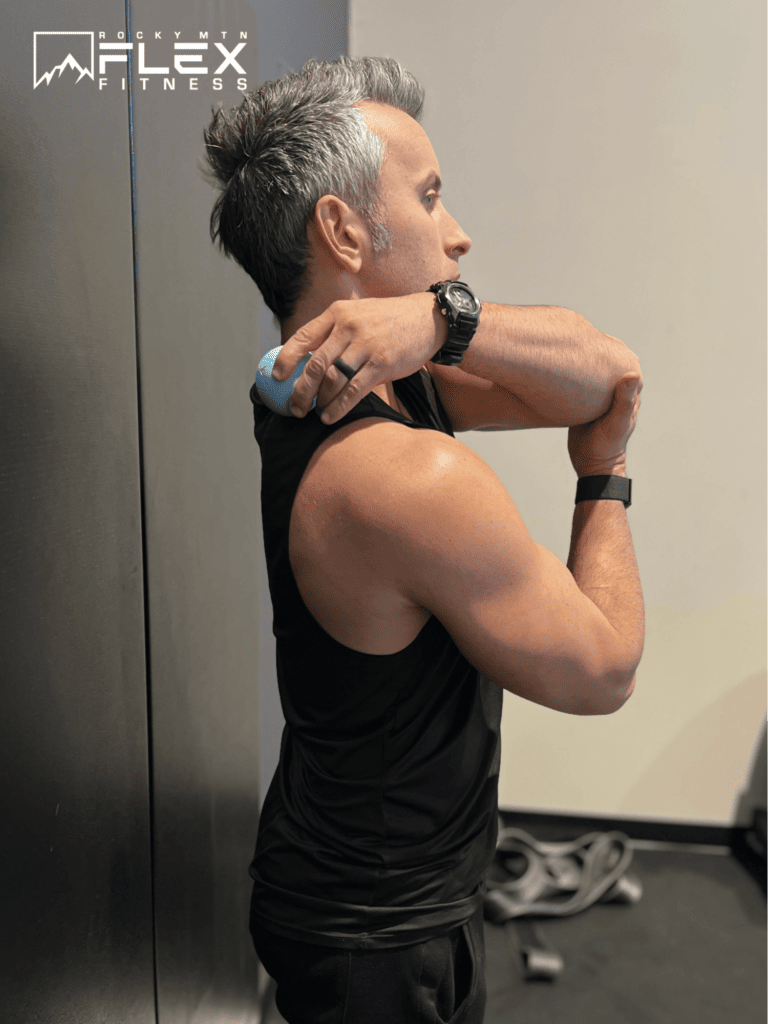
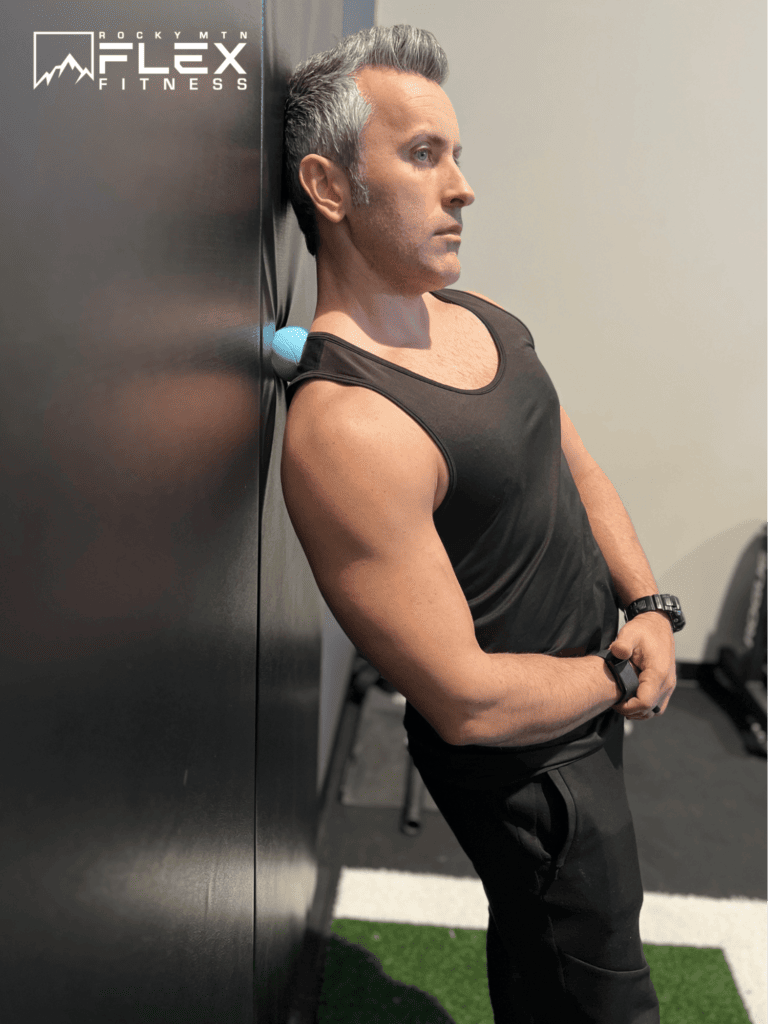
- Teres Minor Trigger Point Release with Lacrosse Ball
The teres minor, often referred to as the “lats little helper,” is a crucial rotator muscle prone to becoming short, tight, and overused. This rotator cuff muscle aids in stabilizing the shoulder joint. Its functions involve assisting in arm adduction and external rotation. Releasing these trigger point areas offers several benefits, including preventing and easing “frozen shoulder,” relieving shoulder pain, improving overall shoulder range of motion, improving posture, and reducing stress on the joints.
What to do to release the teres minor muscle: Place the lacrosse ball on the tense muscle for 10-20 seconds, allowing the muscle to release, aiding in alleviating the tension and discomfort associated with the teres minor.
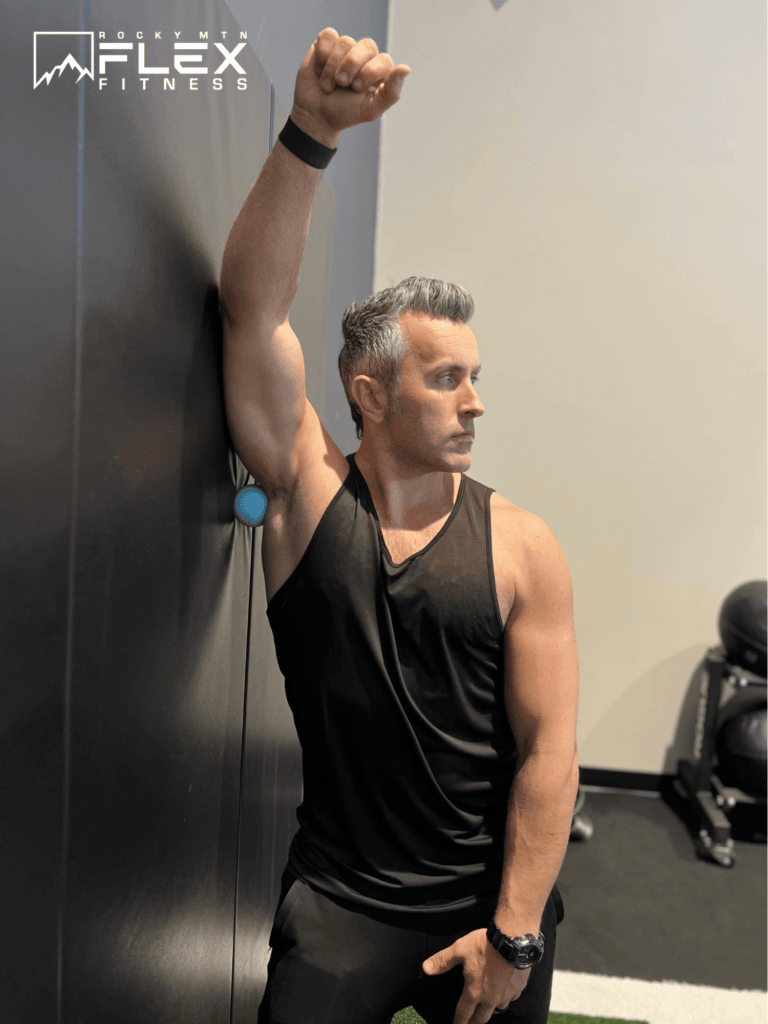
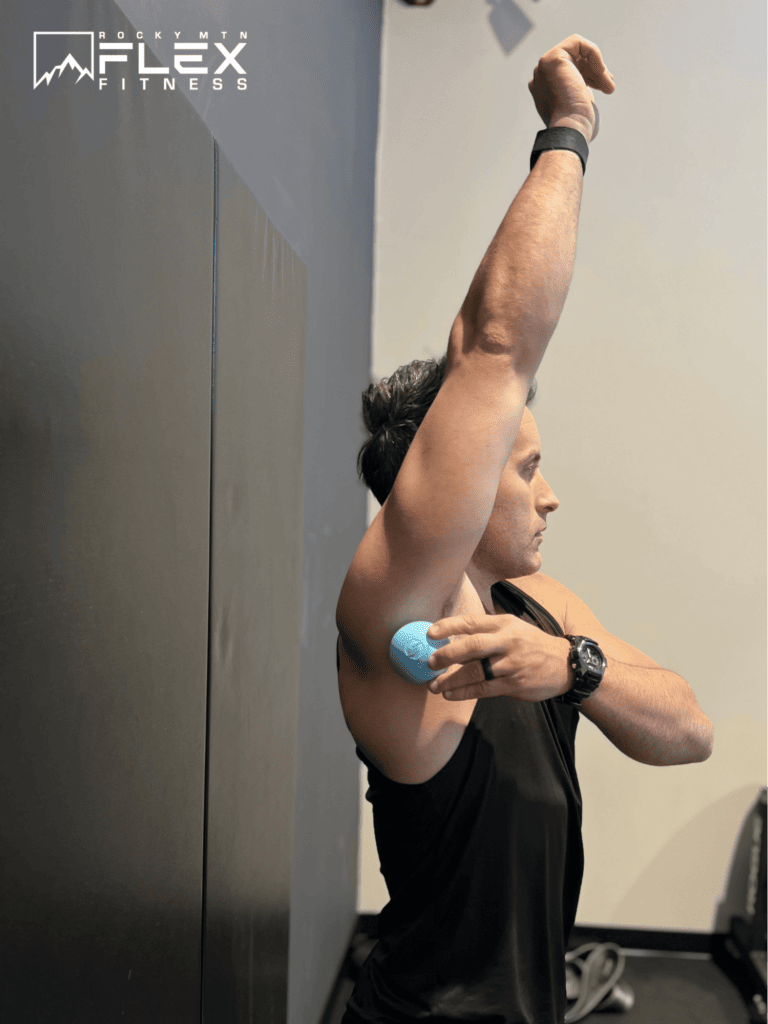
- Psoas Muscle Trigger Point Release with Lacrosse Ball
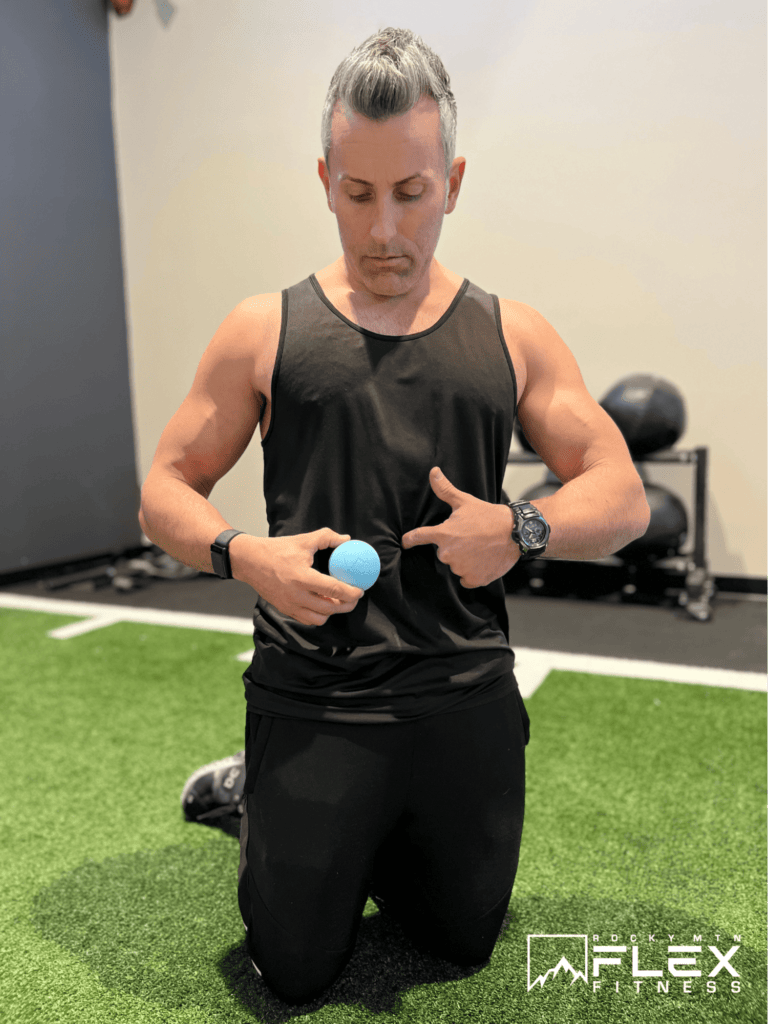
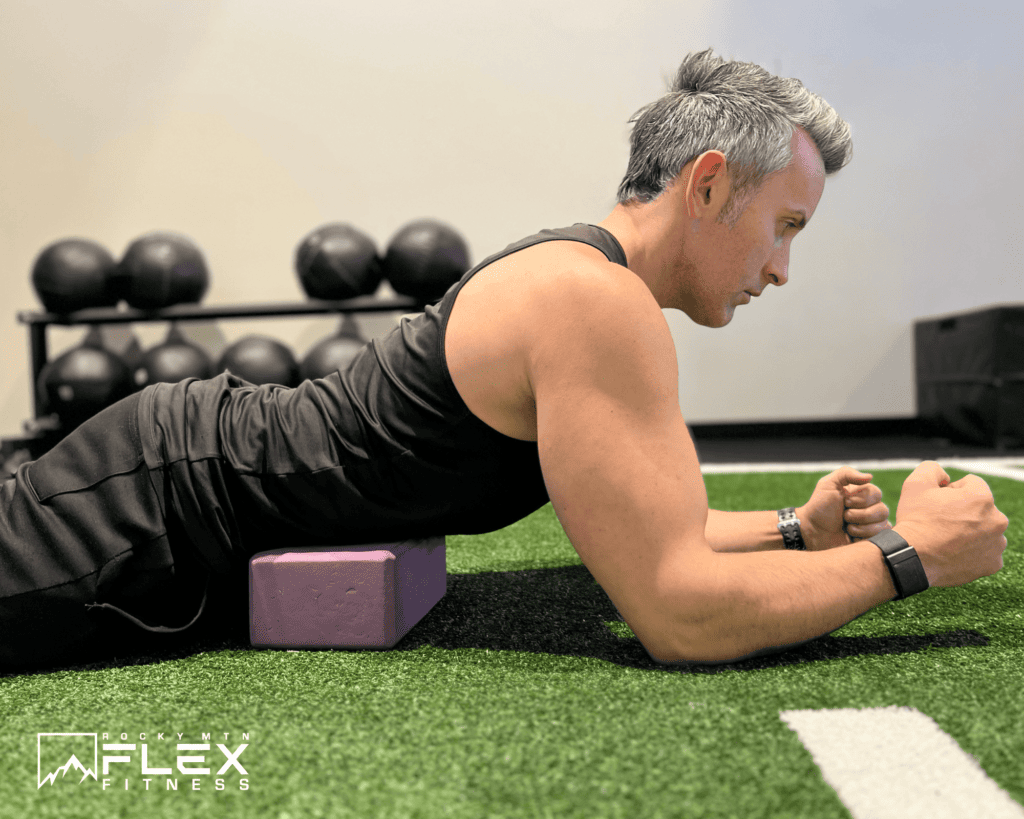
- Hip TFL Trigger Point Release
The tensor fascia lata (TFL) muscle is a small muscle located at the front of the hip. It plays a role in stabilizing the pelvis and assisting with leg movement. Tightness or trigger points in the TFL can contribute to muscle soreness, particularly in the hips, lower back, and thighs. Trigger points in this muscle may also cause discomfort or pain that radiates to the buttocks or down the leg.
What to do to release the TFL muscle: Place the release ball on the hip flexor muscle known as the TFL. Roll across the muscle by moving your body weight onto the ball while crossing the opposite leg in front. Slowly roll back and forth, pinpointing the ideal spot. Aim for about 2-3 minutes on each side, repeating 2-3 sets. This technique targets tightness in the hip flexors and strains in the lower back or hips, aiding in relief and improved functionality.
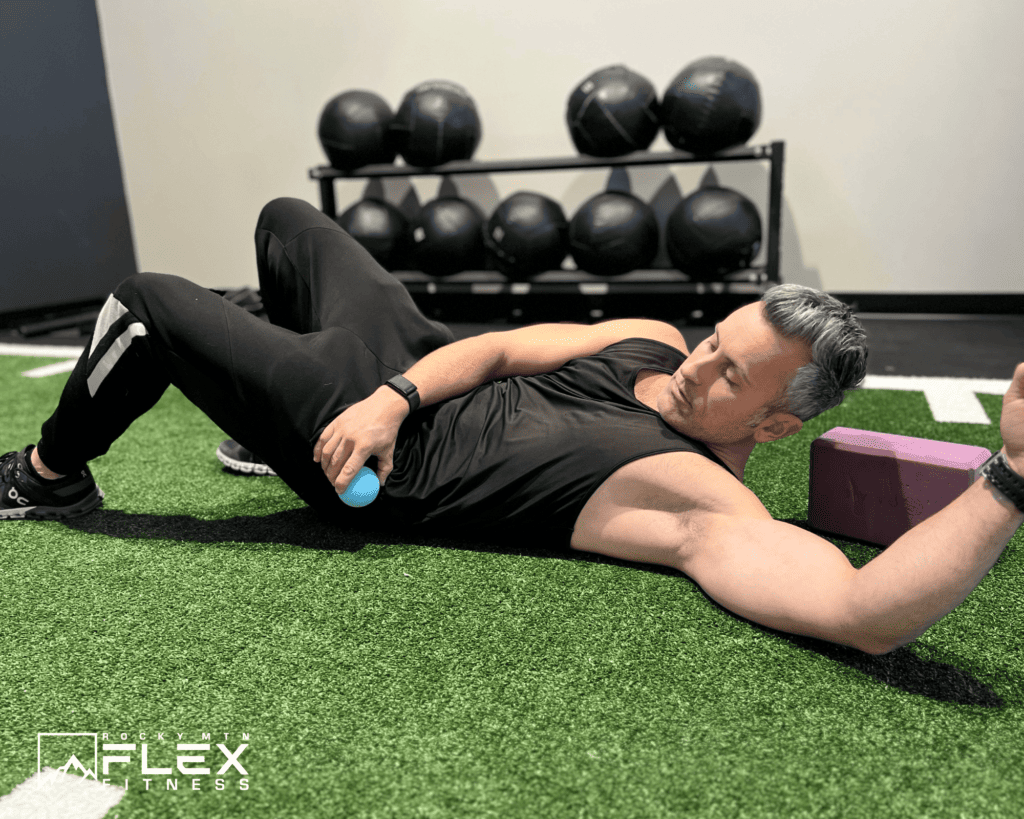
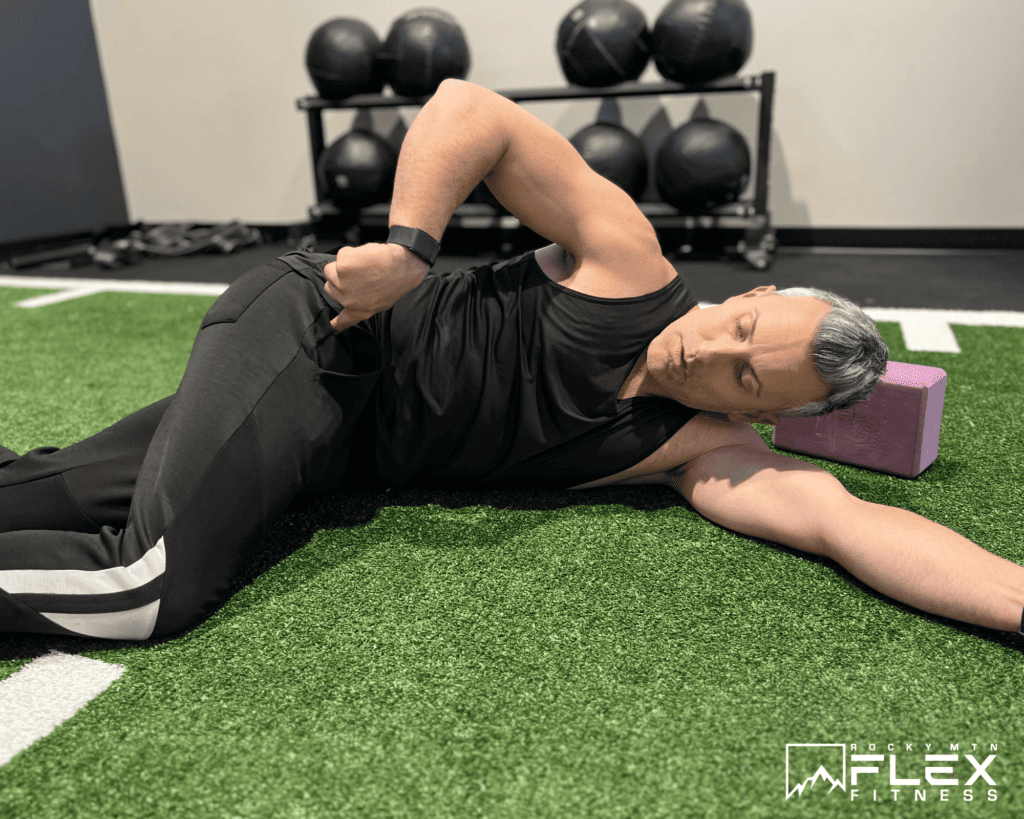
Here are some commonly asked questions:
How does using a lacrosse ball help with myofascial relief?
A lacrosse ball applies pressure to trigger points or knots in the muscles, aiding in releasing tension and improving blood flow to the targeted area. This can help alleviate discomfort and enhance flexibility.
Is it safe to use a lacrosse ball for self-myofascial release?
When used correctly, a lacrosse ball can be safe for self-myofascial release. However, it’s essential to avoid excessive pressure or prolonged use on sensitive areas, as it might cause discomfort or bruising. Avoid placing it directly on bony areas or applying excessive pressure that causes sharp pain. If you have any existing injuries or medical conditions, it’s advisable to consult a healthcare professional such as Dr. Ryan of Savvy PT before starting.
How often should I use a lacrosse ball for myofascial release?
It varies from person to person. Generally, incorporating a few minutes of myofascial release exercises with a lacrosse ball a few times a week can help maintain muscle health and flexibility. Listen to your body and adjust as needed. Always seek professional medical advice if you are unsure.
Can using a lacrosse ball help with muscle soreness after workouts?
Yes, using a lacrosse ball for myofascial release can aid in reducing muscle soreness post-workout by targeting specific areas of tightness or tension, promoting quicker recovery.
Can I use something other than a lacrosse ball for myofascial relief?
Yes, if a lacrosse ball isn’t available, other tools like foam rollers, massage balls, or tennis balls can be used for similar myofascial release techniques, though they may be less in pressure and intensity.
Understanding the benefits of trigger point release with a lacrosse ball emphasizes the importance of addressing fascial tightness for improved flexibility, mobility, and muscle function, allowing you to keep crushing your workouts. Stop by the front desk the next time you are at Rocky Mountain Flex Fitness to get your very own lacrosse ball.
Also, if you aren’t yet a member of the gym and are local to the Denver area, we have a new member special from January 2nd through February 6th, 2024. We are gifting our new members either a FREE 1-hour personal training session with one of our knowledgeable trainers or a 30-minute physical therapy session with Dr. Ryan the Savvy PT, whose office is located inside the gym. Stop by the gym or sign up online to take advantage of this offer!
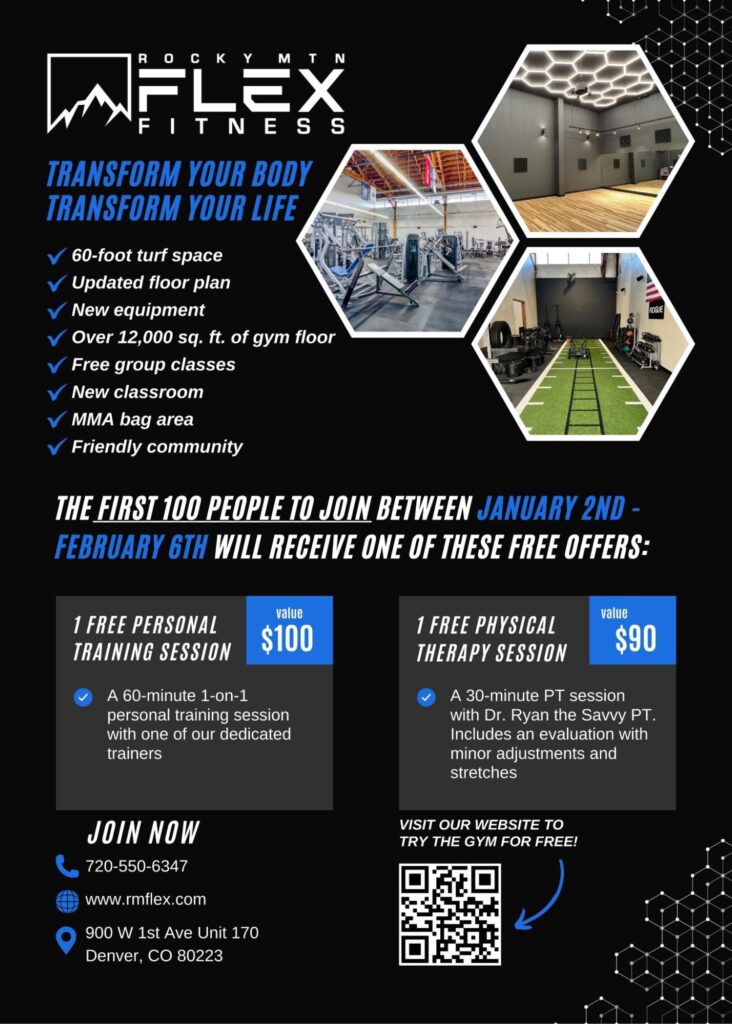
About the gym:
Rocky Mountain Flex Fitness is a gym in Denver, located in the Baker neighborhood since November 2015. Today, the gym has grown into an over 12,000 sq. ft. facility offering personal training, Olympic weightlifting, yoga, sports conditioning, and more. Located within the facility are a Martial Arts Academy (Six Blades Denver MMA School) and individual practitioners offering services such as dry needling and physical therapy (The Savvy PT). Since we increased the gym space, we brought our members a bigger variety of equipment, a 60-foot turf space for functional fitness, sleds, and more, as well as a new classroom space for our group classes. We also have some of the best personal trainers in Denver, as well as several free group classes for members.




